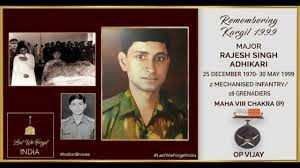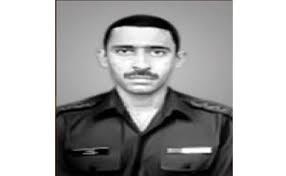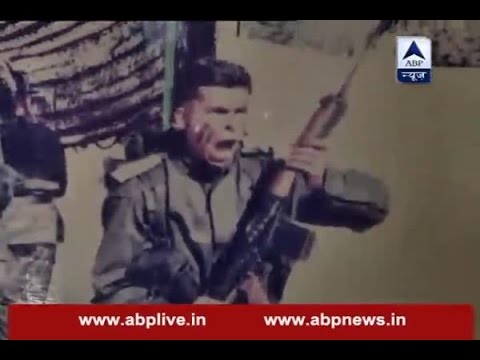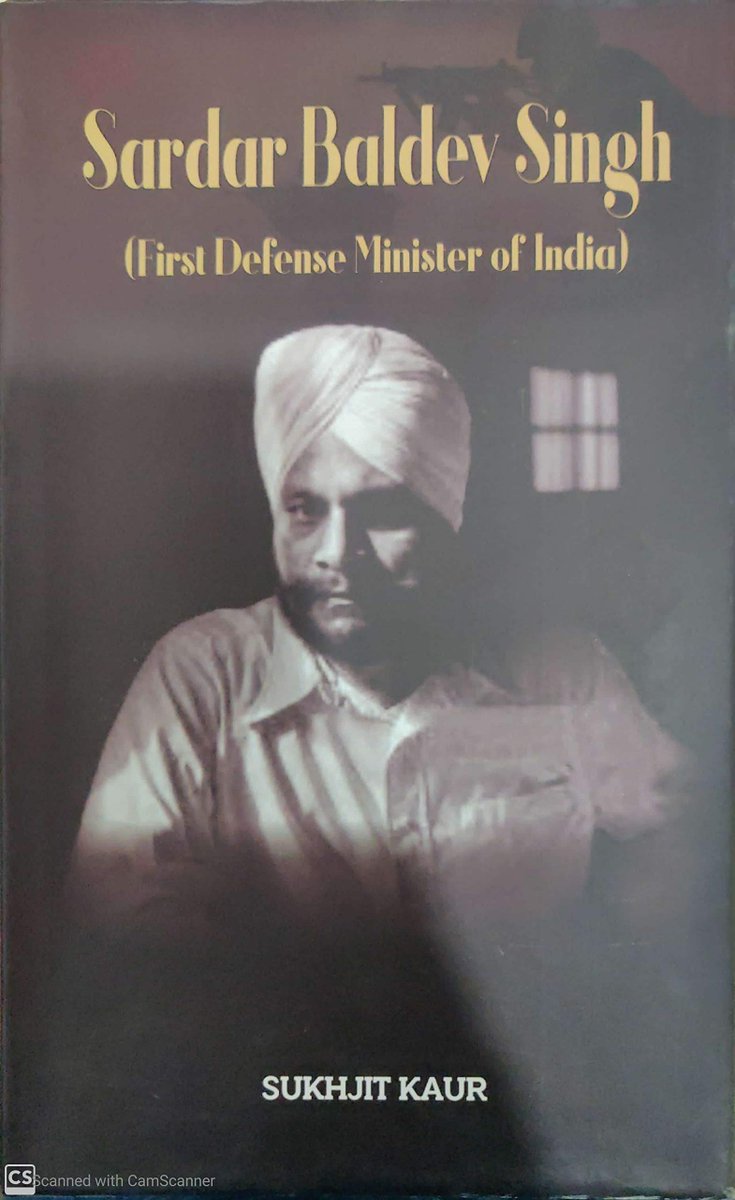
THIS THREAD WILL GIVE YOU CHILLS & Also MAKE YOU CRY.
On the 22nd #KargilVijayDiwas, a look at 10 of the brave soldiers who risked their lives and went above and beyond the call of duty.
On this day in 1999, the Kargil War, formally came to an end, with Indian soldiers
On the 22nd #KargilVijayDiwas, a look at 10 of the brave soldiers who risked their lives and went above and beyond the call of duty.
On this day in 1999, the Kargil War, formally came to an end, with Indian soldiers

successfully recapturing mountain heights that had been seized by Pakistani intruders. It was only possible through the valour of the soldiers of the armed forces.
Here are the stories of 10 heroes of Kargil war victory:
#CaptainVikramBatra, (13 JAK RIF)
Going into battle, he
Here are the stories of 10 heroes of Kargil war victory:
#CaptainVikramBatra, (13 JAK RIF)
Going into battle, he

had said, "I will either come back after raising the Indian flag in victory or return wrapped in it."
He immortalised himself by turning a soft-drink ad's tagline "Yeh dil mange more" into an iconic war cry while showcasing on national television the enemy's machine guns he had
He immortalised himself by turning a soft-drink ad's tagline "Yeh dil mange more" into an iconic war cry while showcasing on national television the enemy's machine guns he had
captured in his first gallant exploits in the Kargil war.
He died fighting Pakistani forces during the Kargil war in 1999 at the age of 24. He was given the highest wartime gallantry award Param Vir Chakra posthumously.
Captain Vikram's most difficult mission was the capture of
He died fighting Pakistani forces during the Kargil war in 1999 at the age of 24. He was given the highest wartime gallantry award Param Vir Chakra posthumously.
Captain Vikram's most difficult mission was the capture of
crucial peak - Point 4875. He had led his team despite high fever and got fatally injured trying to save another officer.
#LieutenantBalwanSingh (18 Grenadiers)
Lt Balwan Singh, now a Colonel, was the Tiger of Tiger Hill. Singh was tasked with the recapture of Tiger Hill.
#LieutenantBalwanSingh (18 Grenadiers)
Lt Balwan Singh, now a Colonel, was the Tiger of Tiger Hill. Singh was tasked with the recapture of Tiger Hill.

At 25, he led soldiers of the Ghatak platoon through a steep, treacherous path on 12-hour journey to reach the hilltop. The assault took the enemy by surprise as India was not expected to take such a difficult route.
In the ensuing close combat, Lt Singh killed four enemy
In the ensuing close combat, Lt Singh killed four enemy
soldiers despite being serious injured. Rest of the Paki soldiers opted to flee than facing wrath of the brave Indian officer.
He planted the Tiranga atop the Tiger Hill and was later awarded the Mahavir Chakra for his bravery. Before setting off for the Tiger Hill, Lt Singh
He planted the Tiranga atop the Tiger Hill and was later awarded the Mahavir Chakra for his bravery. Before setting off for the Tiger Hill, Lt Singh
took a vow with his soldiers: "Tiger Hill pe Tiranga fahrake ayenge, chahe kuchh bhi ho jaye."
#GrenadierYogendraSinghYadav (18 Grenadiers)
Then 19-years-old, Yogendra Singh Yadav (now Subedar Major) was the youngest person to ever be awarded the Param Vir Chakra.
He was the
#GrenadierYogendraSinghYadav (18 Grenadiers)
Then 19-years-old, Yogendra Singh Yadav (now Subedar Major) was the youngest person to ever be awarded the Param Vir Chakra.
He was the

sole survivor of an attack on Tiger Hill in which he took 15 bullets. He was a part of the Ghatak platoon that recaptured three strategic bunkers on Tiger Hill on July 4, 1999.
Yadav led the assault but halfway through enemy lines opened fires, killing his colleagues. Yadav
Yadav led the assault but halfway through enemy lines opened fires, killing his colleagues. Yadav
was himself hit by several bullets which rendered his left arm immobile.
Determined to achieve his objective, Yadav strapped his arm in a belt, wrapped a bandana around his leg and continued to fight the enemy. He killed four enemy soldiers in close combat and silenced the
Determined to achieve his objective, Yadav strapped his arm in a belt, wrapped a bandana around his leg and continued to fight the enemy. He killed four enemy soldiers in close combat and silenced the
automatic fire.
This gave the rest of his platoon the opportunity to climb up the cliff and capture the positions.
#MajorRajeshAdhikari (18 Grenadiers)
On May 14, 1999, Maj. Adhikari was leading the central arm of three 10-man team trying to capture a bunker at 16,000 ft at the
This gave the rest of his platoon the opportunity to climb up the cliff and capture the positions.
#MajorRajeshAdhikari (18 Grenadiers)
On May 14, 1999, Maj. Adhikari was leading the central arm of three 10-man team trying to capture a bunker at 16,000 ft at the

Tololing feature.
He displayed exemplary valour in recapturing Tololing, where he engaged in direct combat with the Pakistani soldiers guarding the bunkers.
Maj Adhikari suffered serious bullet injuries to which he succumbed beyond enemy lines on May 15. He was the second army
He displayed exemplary valour in recapturing Tololing, where he engaged in direct combat with the Pakistani soldiers guarding the bunkers.
Maj Adhikari suffered serious bullet injuries to which he succumbed beyond enemy lines on May 15. He was the second army
officer to be KIA during Kargil war.
His body was recovered 13 days later. In his pocket was an unread letter from his wife. He was posthumously awarded Mahavir Chakra for his bravery.
#MajorVivekGupta (2 Rajputana Rifles)
Vivek Gupta was leading a dangerous uphill assault
His body was recovered 13 days later. In his pocket was an unread letter from his wife. He was posthumously awarded Mahavir Chakra for his bravery.
#MajorVivekGupta (2 Rajputana Rifles)
Vivek Gupta was leading a dangerous uphill assault

against the Pakistani intruders. He captured two bunkers before being enemy bullets tore open his torso in Drass.
The Major lay in the snow alongside dead colleagues for two days. He died fighting exactly seven years after being commissioned in the 2nd RR -- June 13, 1992.
The Major lay in the snow alongside dead colleagues for two days. He died fighting exactly seven years after being commissioned in the 2nd RR -- June 13, 1992.
#NaikDigendraKumar (2 RR)
Naik Digendra Kumar is best known for his plan to recapture Tololing that is located an altitude of 15,000 feet. His plan had surprised General VP Malik, the then army chief, who held a Sainik Darbar in Drass on June 2, 1990 after three failed attempts
Naik Digendra Kumar is best known for his plan to recapture Tololing that is located an altitude of 15,000 feet. His plan had surprised General VP Malik, the then army chief, who held a Sainik Darbar in Drass on June 2, 1990 after three failed attempts

to get back Tololing.
His idea of following the same route as the enemy sounded too risky to the army chief. But Naik Digendra Kumar insisted and set off on the mission.
The team of 10 commandos came under heavy firing from 250 Pakistani soldiers. Nine commandos died. But before
His idea of following the same route as the enemy sounded too risky to the army chief. But Naik Digendra Kumar insisted and set off on the mission.
The team of 10 commandos came under heavy firing from 250 Pakistani soldiers. Nine commandos died. But before
that they handed over their guns and grenades to Naik Digendra Kumar, who lodged them in all 11 bunkers of the enemy.
He killed Major Anwar Khan of Pakistan Army in hand-to-hand combat slitting enemy's throat with his dagger. He planted Indian flag on the hilltop before falling
He killed Major Anwar Khan of Pakistan Army in hand-to-hand combat slitting enemy's throat with his dagger. He planted Indian flag on the hilltop before falling
unconscious. He woke up in an army hospital.
#MajorPadmapaniAcharya (2RRifles)
Maj Acharya was a company commander and assigned the task of recapturing an enemy position in Tololing. Bracing a hail of Pakistani shells and bullets, Major Acharya overran the enemy position.
#MajorPadmapaniAcharya (2RRifles)
Maj Acharya was a company commander and assigned the task of recapturing an enemy position in Tololing. Bracing a hail of Pakistani shells and bullets, Major Acharya overran the enemy position.

He was grievously injured in the process and succumbed to his injuries soon after completing his mission. Days before the battle, he had written a letter to his father telling him "combat is an honour of a lifetime".
In the same letter, he requested his father to tell "a story
In the same letter, he requested his father to tell "a story
a day from the Mahabharata" to his daughter Charu, who could never got to see her father again but at 20, she wishes to join the army.
#RiflemanSanjayKumar (13 JAK Rif)
Sanjay Kumar was once a taxi driver and had been rejected thrice by the army. Today, he is the youngest of
#RiflemanSanjayKumar (13 JAK Rif)
Sanjay Kumar was once a taxi driver and had been rejected thrice by the army. Today, he is the youngest of

three surviving Param Vir Chakra decorated soldiers of the Indian Army.
During the Kargil war, he was part of a column that was tasked to capture area Flat Top of Point 4875 in the Mushkoh Valley.
When automatic fire from one of the enemy bunkers posed stiff opposition and
During the Kargil war, he was part of a column that was tasked to capture area Flat Top of Point 4875 in the Mushkoh Valley.
When automatic fire from one of the enemy bunkers posed stiff opposition and
stalled the column, Kumar charged at them head on. He was hit in the leg and hip. But he single-handedly wiped out a bunker after others from his unit had fallen.
#LieutenantManojKumarPandey (1/11 Gorkha Rifles)
According to his father, Manoj Kumar Pandey had joined the Indian
#LieutenantManojKumarPandey (1/11 Gorkha Rifles)
According to his father, Manoj Kumar Pandey had joined the Indian

Army with the sole ambition of getting a Param Vir Chakra, the highest gallantry award. He got one in Kargil conflict albeit posthumously.
Pandey was a soldier of 1/11 Gorkha Rifles. His team was tasked to clear enemy positions in order to prevent his battalion from getting
Pandey was a soldier of 1/11 Gorkha Rifles. His team was tasked to clear enemy positions in order to prevent his battalion from getting
exposed in the daylight. The battlefield was Khalubar.
He led his team valiantly & was shot on a ledge but he made it to the top of a cliff. He busted enemy bunkers before succumbing to bullets. His daredevilry finally led to the recapture of Khalubar.
#CaptAnujNayyar (17 Jat)

He led his team valiantly & was shot on a ledge but he made it to the top of a cliff. He busted enemy bunkers before succumbing to bullets. His daredevilry finally led to the recapture of Khalubar.
#CaptAnujNayyar (17 Jat)


During the initial phase of C Coy's assault on Pimple II, Nayyar's company commander was injured, and command devolved upon him. As the unit advanced under heavy enemy artillery and mortar fire, the lead section reported the location of 3-4 enemy bunkers.
THREAD CONTINUES
THREAD CONTINUES
Nayyar moved forward and destroyed the first bunker with a rocket launcher and grenades. Still under heavy fire, he then proceeded with the lead section, which consisted of 7 personnel, and destroyed two more bunkers. During the battle, Nayyar killed 9 Pakistani soldiers and
destroyed three medium machine gun bunkers. The company then began its assault on the last remaining bunker, but while clearing it, an enemy RPG directly hit Nayyar, killing him instantly.
The securing of Pimple Complex paved the way for the recapture of Tiger Hill which
The securing of Pimple Complex paved the way for the recapture of Tiger Hill which
finally forced Pakistan to retreat back across the Line of Control.
Nayyar was posthumously awarded the Maha Vir Chakra for his bravery and leadership in combat.
#JaiHind
#VANDEMATARAM
Nayyar was posthumously awarded the Maha Vir Chakra for his bravery and leadership in combat.
#JaiHind
#VANDEMATARAM
• • •
Missing some Tweet in this thread? You can try to
force a refresh














